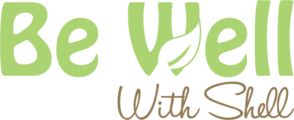Explain how food labelling works to each of the following parents. Give real-life examples of how labels can be used to choose healthier options.
1. ‘Where can I look for a quick guide on what’s in a packet of biscuits? I’m shopping with little ones, I just want to compare one product with the next buy them and get home before they start whining for a snack.’
On the front of most packets of biscuits you will find a quick reference guide to the energy, total fat, saturated fat, sugar and salt content per biscuit. Some of these nutritional guides will also be colour coded in a traffic light system for even speedier comparisons (detailed in answer 3 below). As some biscuits are different sizes you may want to consider this when you are comparing one product to another.
The supermarket branded biscuits use a clear traffic light system or red, amber and green colour coding. Branded biscuits display the same nutritional information, but in colours coordinated with their packaging.
There is some variation in content even between different brands of the same biscuit.
2. ‘What are GDAs? Do I need to bother about them? I never have before!’
GDA is the Guideline Daily Amounts used for the nutritional information labels on products. They were used from 1998 to 2011, this information is now known as Reference Intake and was updated to correlate with European regulations. The labels are used to translate the scientific nutritional information into something more consumer friendly to make it easy to work out how each food can fit into a daily diet.
The labels show calories and seven of the main nutrients; protein, carbohydrate, sugar, fat, saturated fat, fibre and salt. The guidelines are there to help a healthy, average person know what to eat. The GDAs can be found on the back of the packet and can include separate information for nutritional references for men, women, children, (For the updated RI labels there is one set for the average adult) per 100g of product and per recommended portion (slice for example). The label on the front of the packet is a quick point of reference and discourages over consumption.
Reference Intakes for energy and selected nutrients (adults)
Energy or nutrient
Reference Intake
Energy
8400kJ / 2000kcal
Total fat
70g
Saturates
20g
Carbohydrates
260g
Sugars
90g
Protein
50g
Salt
6g
Copied from the Food and Drink Federation 2017
It is important to be aware of this information as it can help people to lead a healthier lifestyle. It is particularly useful in comparing products and thinking about which will fit into your balanced diet.
3. ‘I’ve noticed a little circle on the front of labels – often in red, amber and green. What is it telling me?’
The nutritional labels on the front of packets show the Reference Intake for an average adult. They show a serving amount (e.g per biscuit or per 100g) with the nutritional information as a percentage of the total daily RI. The nutritional information represented are calories, fat, saturated fat, sugar and salt.
The colour coding is there as a quick reference showing whether each nutrient is high, medium or low. Red is high, amber is medium and green is low. Mostly green products are the healthier choice, mostly amber products are fine to be eaten in moderation while those showing mostly red should be eaten infrequently.
4. ‘How can I understand whether a food is high in fat, saturated fat, sugar or salt? I just want a ready-meal for tonight’s dinner as I haven’t got time to cook. Which is best?’
The majority of ready meals will have the Reference Intake (RI) as a label on the front of the product for quick information. The supermarket brands tend to use the traffic light display which more clearly shows the highs and lows for comparison across products. The information on these front of product labels are limited but they do include; portion size, calories, fats, saturated fats, sugar and salt. The amounts are in grams per portion size and shown as a percentage of the daily RI.
For more detailed nutritional information and ingredients you can take a look at the back of product labels.
The products with more green sections on the label are the healthier options as they will be lower in fats, saturated fat, sugar, salt and calories. The labels above show that ready meals can be a healthy option (mostly green sections) as well as quick and easy to get from the oven to the plate. But they can also be an unhealthy option (mostly red sections), so when going for the convenience of a ready meal it is important pay attention to the label.







